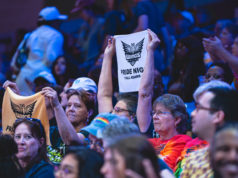Retro gaming can be expensive. Classic Nintendo Entertainment System games go for $5 a pop on the Nintendo eShop. This doesn’t sound bad, unless you want to play even a fraction of the hundreds of games that have come out for the NES, Super Nintendo, Sega Genesis, and more. If a game isn’t available to download on the eShop, Playstation Store, or Steam, a gamer has to hit up used game stores, eBay, and flea markets, hoping to get lucky finding a beloved rare game like Panzer Dragoon Saga and paying less than, say, $700 for a copy. What do people – from the casual retro gamer to the most ardent completist – do with both technological and budgetary limitations? Enter: the Raspberry Pi.
The Pi is a simple single board computer retailing for about $35. Created by the Raspberry Pi Foundation in the United Kingdom, it has an admirable purpose: to teach basic computing skills affordably. However, by buying extra power and connection components and a USB controller and by loading the Pi with “emulators” (software that works like old game consoles such as the NES or Atari 2600), players essentially have a functional game system. Then, by downloading “ROMs” (the read-only memory from game cartridges), gamers have easy access to a backlog of nearly every video game ever made, from the original Playstation all the way back to Pong. Game emulation has been popular since the mid-’00s, when retro gaming first took off. But playing with a Pi means playing Strider for NES on a 52-inch 4K TV instead of a tiny PC. This not only reduces the cost from spending thousands on old consoles and games to just about $100 on the parts for a gaming Pi, but it also saves the space that hundreds of cartridges, discs, and consoles take up. It also allows gamers to play games that either never had home releases, like the arcade version of Aliens vs. Predator, or games that were never released in America, such as Mother 3. Players can even buy cases to house the tiny systems to make them look like a Super Nintendo or Sega Genesis.
The problem is, the most common way of getting ROMs is downloading them off not-quite-legally sanctioned sites. In other words, piracy. Since the beginning of gaming emulation, sites full of hacked copies of Super Mario Bros. and Sonic the Hedgehog have come and gone with takedown notices and threats from lawyers. However, emulators are legal, as they’re only emulations of a system and not ripped versions of copyrighted code and hardware, and people have the legal right to rip copies of games that they own for the purpose of having a digital copy. Sharing those copies, though, is still illegal. Downloading copies of games from defunct companies such as Data East (the makers of Burger Time) forms another gray area.
This mire still largely translates into a passionate fanbase using illegal means to play their favorite games. It’s also a situation in which only those who have hosted sites distributing ROMs have been shut down by lawyers and that has seen almost no legal ramifications for those downloading and playing them. But it’s also seen people learn to work with computers for the first time and has filled a niche that the market can’t fill with the availability of certain games. While the practice sits in a very deep gray area, as long as players can customize their personal gaming consoles and play hard-to-acquire games, it’s certain to continue.












